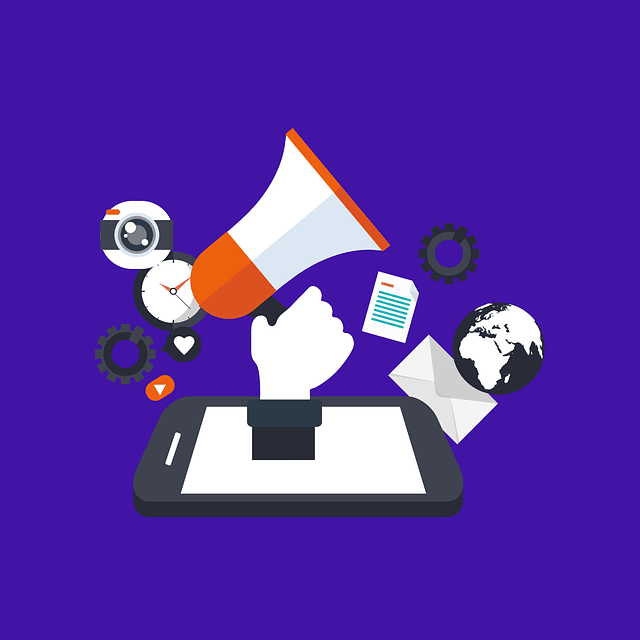Understanding Traditional Marketing
Definition of Traditional Marketing
You may define traditional marketing as the set of promotional practices, tools, and strategies that predate the digital age. It encompasses various marketing methods that can be implemented without relying on the internet. Some common techniques include TV commercials, radio spots, newspaper advertisements, billboards, flyers, and street banners. These approaches focus on reaching audiences through tangible media and direct engagement, providing a broad spectrum of market outreach. For further insight into the types of traditional marketing, explore our article on traditional marketing methods.
Evolution of Traditional Marketing
The concept of marketing has existed since the 19th century, but traditional marketing began to take a more structured form in the 1950s. During this time, innovators utilized print media extensively, with platforms such as newspapers, magazines, and flyers gaining popularity. As the years progressed, the landscape evolved to include broadcast media such as radio and television, amplifying reach and impact (Mailchimp).
Despite newer digital techniques, traditional marketing remains significant. It provides a local reach and can create a lasting effect, even if it often comes at a higher cost and with limited real-time feedback (Loungelizard). As you consider your marketing strategy, understanding the historical context can help you appreciate how and why these tools have shaped consumer perceptions over time.
| Year | Marketing Evolution |
|---|---|
| 1800s | Emergence of print advertising |
| 1950s | Growth of radio and television advertising |
| 2000s | Digital marketing begins to rise in prominence |
| Present | Integration of traditional and digital marketing strategies |
For more detailed examples of traditional marketing, refer to our section on traditional marketing examples.
Advantages of Traditional Marketing
Traditional marketing tools offer distinct advantages that can greatly enhance your business outreach and effectiveness. Here are some of the primary benefits:
Targeting Specific Audiences
Traditional marketing allows for precise audience targeting. By utilizing various channels such as TV, radio, and print media, you can effectively reach specific demographic groups based on their habits and interests. You can tailor your message to resonate with your intended audience, increasing the likelihood of engagement and conversion. For instance, direct mail campaigns show higher effectiveness among millennials, who are more likely to respond to physical advertisements compared to older generations like Gen X or Baby Boomers (Salespanel).
| Audience Segment | Preference |
|---|---|
| Millennials | Higher response to direct mail |
| Gen X | Moderate response to digital and traditional |
| Baby Boomers | Higher preference for traditional ads |
Local Reach and Impact
Traditional marketing channels provide an exceptional reach, especially at the local level. Methods such as radio, billboards, and community print publications ensure that your message is visible to potential customers wherever they may be—at home, commuting, or out in public. This ubiquitous presence increases the chances of conversion, as potential customers are continually exposed to your brand through various mediums (Mailchimp).
For example, local radio promotions can effectively engage listeners during commute times, while billboard advertising can capture the attention of passersby in high-traffic areas, enhancing brand visibility.
| Marketing Channel | Reach Type |
|---|---|
| Billboards | High exposure in public spaces |
| Radio | Localized audience during their commute |
| Print Ads | Targeted at specific regional demographics |
Brand Recall with Traditional Methods
One of the key benefits of traditional marketing is its effectiveness in enhancing brand recall. Physical advertisements such as posters and billboards have been shown to leave a lasting impression compared to digital ads. This is particularly important in building brand recognition over time (Salespanel).
Implementing creative and memorable designs in your traditional marketing materials can lead to improved recognition and recall among your target audience. Partnering with online poster printing services can further optimize your campaign for cost-effectiveness while maximizing reach.
| Medium | Brand Recall Effectiveness |
|---|---|
| Posters | High recall compared to digital ads |
| Billboards | Long-term brand awareness |
| Direct Mail | Relevant when timed closer to purchasing decisions |
By leveraging these advantages of traditional marketing, you can create a comprehensive strategy that effectively reaches and resonates with your target audience. For more insight on various approaches, consider exploring our articles on traditional marketing examples and traditional marketing strategies.
Disadvantages of Traditional Marketing
While traditional marketing tools have been an integral part of advertising strategies for decades, they come with notable disadvantages that you should consider when planning your marketing efforts.
Low Engagement and Slow Conversion
Traditional marketing methods often result in low engagement rates compared to digital platforms. Techniques such as TV commercials, radio spots, and billboards rely heavily on one-way communication. This static nature means that you cannot interact with your audience in real-time, limiting your ability to foster relationships and gather instant feedback. Consequently, conversion rates tend to be slower, as potential customers are less likely to take immediate action after engaging with these types of advertisements. For a deeper look at various approaches, check our article on traditional marketing channels.
Measurement Challenges
Measuring the effectiveness of traditional marketing campaigns poses significant challenges. Unlike digital marketing, where metrics such as click-through rates and conversion rates can be easily tracked, traditional marketing lacks robust tools for real-time analysis. You may find it difficult to demonstrate clear returns on investment (ROI) or accurately assess campaign performance (Mailchimp). Without substantial data to inform your strategies, it can be hard to determine what works best, leading to potentially inefficient allocation of your marketing budget.
| Aspect | Traditional Marketing | Digital Marketing |
|---|---|---|
| Engagement | Low | High |
| Conversion Speed | Slow | Fast |
| Measurement | Difficult to track | Easy to measure |
| Communication Style | One-way | Two-way |
Cost Comparison with Digital Marketing
Traditional marketing is generally more expensive when compared to digital marketing efforts. Costs associated with producing TV ads, placing billboards, or distributing direct mail can quickly add up. This financial burden may not yield proportionally high returns, especially when weighed against the more effective and cost-efficient nature of digital campaigns (Simplilearn). This disadvantage is crucial for CEOs and marketing executives to consider when stacking marketing budgets against potential reach and effectiveness.
When evaluating the potential benefits of traditional marketing tools, keep in mind these limitations. Striking the right balance with traditional marketing strategies will aid in enhancing your overall marketing approach.
Types of Traditional Marketing Tools
When considering your marketing strategy, traditional marketing tools can provide a significant advantage in reaching your target audience. Understanding the various types of traditional marketing methods can help you select the most effective approaches for your business.
TV Advertising
TV advertising remains one of the most impactful traditional marketing tools, allowing you to showcase your brand on a large scale. The average Return on Investment (ROI) on TV ads ranges between 300 and 500 percent, which makes it an excellent option for companies with substantial marketing budgets (Salespanel). However, the high costs associated with national TV campaigns may pose challenges for small business owners.
| Key Features | Advantages | Considerations |
|---|---|---|
| Wide audience reach | High ROI potential | Expensive for small businesses |
| Engaging visual medium | Facilitates brand storytelling | Requires significant planning |
Radio Promotions
Radio promotions offer a unique way to engage with listeners through audio messaging. This medium allows businesses to target specific demographics and regions, making it effective for local marketing. Radio promotions can be a cost-effective choice compared to TV advertising while still maintaining an engaged audience.
| Key Features | Advantages | Considerations |
|---|---|---|
| Targeted audience reach | Cost-effective for local markets | Limited to audio content |
| Flexibility in scheduling | Quick campaign executions | No visual appeal |
Billboard Campaigns
Billboard advertising creates brand awareness at a national level, focusing on long-term brand recognition rather than immediate sales. Creativity and unique designs are critical for standing out in this crowded space. While billboards may not directly lead to sales, they serve as a reminder of your brand to potential customers (Salespanel).
| Key Features | Advantages | Considerations |
|---|---|---|
| High visibility and reach | Supports long-term brand awareness | Requires creative design |
| Location-specific targeting | Potential for mass awareness | Limited messaging capacity |
Direct Mail Marketing
Direct mail marketing, despite being sometimes perceived as outdated, continues to be relevant, particularly for items received closer to buying decisions. Studies show that millennials are more likely to take action based on direct mail compared to older generations (Salespanel). This method allows for personalized communication and can drive engagement effectively.
| Key Features | Advantages | Considerations |
|---|---|---|
| Personalization opportunities | High engagement rates | Considered outdated by some |
| Tangible, physical format | Effective for local targeting | Can be costly to produce |
By exploring these traditional marketing tools—TV advertising, radio promotions, billboard campaigns, and direct mail marketing—you can better position your brand to meet your marketing objectives. Each method has its own strengths and challenges, making it essential to align your choices with your overall marketing strategy. For further insights, consider exploring our articles on traditional marketing strategies and traditional marketing channels.
Effectiveness of Traditional Marketing Channels
In assessing the effectiveness of traditional marketing channels, it is essential to consider key metrics such as Return on Investment (ROI), brand recall, and relevance in contemporary marketing strategies. This section reviews four primary traditional marketing channels: TV advertisements, posters, direct mail, and billboards.
TV Ads ROI Comparison
Television advertising continues to be a powerful medium for brand promotion. The average Return on Investment (ROI) for TV ads ranges from 300 to 500 percent. This makes television a favorable option for businesses with significant marketing budgets. However, it may not be as accessible for small business owners due to the high costs associated with production and airtime Salespanel.
| ROI Range | Percentage |
|---|---|
| Low End | 300% |
| High End | 500% |
Posters for Brand Recall
Posters remain a formidable tool for enhancing brand recall. Research indicates that traditional posters outperform digital advertisements in terms of memorability. They can be produced in collaboration with online poster printing services, ensuring cost-effectiveness while potentially reaching a broader audience Salespanel.
| Effectiveness Metric | Posters | Digital Ads |
|---|---|---|
| Brand Recall | Higher | Lower |
Direct Mail Relevance
Despite perceptions of being outdated, direct mail continues to be a relevant strategy in marketing. Items received close to the time of purchase can influence buying decisions significantly. Notably, younger demographics, particularly millennials, exhibit a heightened probability of responding to direct mail compared to older generations such as Gen X or Baby Boomers Salespanel.
| Demographic | Response Rate |
|---|---|
| Millennials | Higher Probability |
| Gen X | Moderate Probability |
| Baby Boomers | Lower Probability |
Creative Billboard Advertising
Billboard advertising is another traditional marketing channel that plays a crucial role in brand awareness. It is particularly effective for establishing a national presence. Success in this medium often hinges on creativity and unique designs to garner attention. Billboards focus on long-term brand recognition rather than short-term sales, making them an effective investment in the overall marketing strategy Salespanel.
| Effectiveness | Long-Term Awareness | Immediate Sales |
|---|---|---|
| Focus | High | Low |
Each traditional marketing channel brings unique strengths and challenges. Evaluating their effectiveness can aid in strategic planning and implementation of traditional marketing tactics that align with your overall business goals. For further exploration, consider examining various traditional marketing examples and strategies to enhance your approach.
Strategic Use of Traditional Marketing
Utilizing traditional marketing tools in a strategic manner can elevate your brand’s visibility and engagement. This section emphasizes the importance of multichannel marketing integration and the benefits of combining digital and traditional methods.
Multichannel Marketing Integration
Integrating various marketing channels enables a unified approach to reaching your target audience effectively. Combining traditional marketing methods with modern techniques helps provide comprehensive messaging across platforms. A well-rounded strategy can lead to improved engagement and higher conversion rates.
| Marketing Channel | Purpose | Benefits |
|---|---|---|
| TV Advertising | Broad audience reach | High visibility and impact |
| Radio Promotions | Targeted local audience | Captive listeners during commutes |
| Billboard Campaigns | High traffic visibility | Instantly grabs attention |
| Direct Mail Marketing | Personalized approach | Higher response rates |
Many businesses find that blending old and new marketing practices gives them a competitive edge. Traditional channels, such as print ads and direct mail, still resonate with consumers and can be effectively integrated with digital strategies to maximize outreach (William & Mary Online). The synergy created by utilizing a variety of marketing methods supports a company’s ability to cater to a diverse clientele.
Combining Digital and Traditional Methods
Combining digital and traditional marketing approaches creates opportunities for businesses to leverage the strengths of both platforms. Consumers continue to engage with traditional outlets like TV, print, mail, and billboards, demonstrating the ongoing relevance of these methods (William & Mary Online).
Blending both strategies can yield fruitful results by enhancing overall effectiveness. For instance, using email marketing for follow-ups after a direct mail campaign helps reinforce your message and encourages customer action. Additionally, leveraging social media alongside traditional advertising can provide instant feedback on campaign performance, allowing for real-time adjustments.
Incorporating traditional marketing into your digital marketing strategies not only fosters a distinct brand image but also expands your reach and effectiveness. By analyzing the performance of both types of marketing tactics, your brand can better establish itself as a trusted name within your industry (Mailchimp).
This strategic integration allows businesses to adapt to consumer preferences while enhancing lead conversion and profit potential. Embracing a balanced approach ensures that you effectively harness the benefits of both digital and traditional marketing channels.
Successful Case Studies in Traditional Marketing
Examining successful case studies can provide valuable insights into how established companies leverage traditional marketing to enhance their brand image and drive results.
Established Companies and Traditional Advertising
Companies such as Apple and HDFC Bank have effectively utilized traditional advertising strategies to communicate their brand messages and engage consumers. Through television commercials, print ads, and radio promotions, these companies have maintained a strong presence in both local and national markets. This consistent visibility not only reinforces customer loyalty but also attracts new customers. Their campaigns often integrate elements that resonate emotionally with the audience, creating a strong connection and trust.
| Company | Marketing Tool Used | Impact |
|---|---|---|
| Apple | TV Commercials | Increased brand recognition and loyalty |
| HDFC Bank | Print Advertisements | Strengthened customer trust and engagement |
Both companies exemplify how traditional advertising can be a crucial component of a comprehensive marketing strategy. For more examples, explore our article on traditional marketing examples.
Diversification of Product Lines
Diversification of product lines has also featured prominently in traditional marketing strategies. Companies like Reliance Industries and Infosys adopted bonus share issues as part of their branding efforts to strengthen their market position and attract more investors. Such initiatives not only enhance financial stability but also widen their appeal in the marketplace.
| Company | Method of Diversification | Purpose |
|---|---|---|
| Reliance Industries | Bonus Issues | Attract investors and enhance liquidity |
| Infosys | Bonus Issues | Strengthen financial position and market trust |
This strategy not only enhances brand visibility but also positions the companies favorably in the eyes of potential investors. Explore further on marketing tactics through our article on traditional marketing strategies.
Corporate Social Responsibility Initiatives
Effective traditional marketing is not just about promoting products; it’s also about demonstrating corporate values. Salesforce is a case in point. The company’s dedication to diversity and inclusion is evident in its traditional marketing campaigns, such as the Equal Pay program. This initiative, aimed at eliminating gender pay gaps, has been widely publicized through various traditional channels, reinforcing Salesforce’s reputation as a socially responsible organization.
| Company | Initiative | Outcome |
|---|---|---|
| Salesforce | Equal Pay Program | Enhanced brand perception and employee morale |
By integrating corporate social responsibility into marketing efforts, companies can appeal to socially-conscious consumers and further strengthen their brand identity. For insights on sustainable practices, refer to our article on traditional marketing practices.
Blending Traditional and Digital Marketing
In today’s fast-evolving marketing landscape, blending traditional strategies with digital approaches can enhance your brand’s visibility and effectiveness. Understanding how to incorporate traditional elements into your digital strategies is crucial for maximizing your marketing impact.
Incorporating Traditional Elements in Digital Strategies
To successfully integrate traditional marketing tools with digital techniques, consider the following approaches:
- Cross-Promotion: Use traditional media like TV or radio to promote your online platforms. Encourage viewers or listeners to visit your website or engage with your social media pages.
- Print to Digital: Include QR codes in printed materials such as flyers or brochures. This allows customers to easily access your website or specific promotions directly from their smartphones.
- Video Content: Create video advertisements using the storytelling style of traditional commercials, then share these on social media platforms and your website.
- Event Marketing: Host physical events while promoting them through digital channels. This could involve live streaming the events or creating dedicated event pages on your website.
- Email Marketing: Develop email campaigns that leverage insights and audience understanding gained from traditional advertising efforts.
These strategies can help create a cohesive marketing plan that addresses all potential customer touchpoints. To further understand the benefits of traditional methods, refer to our insights on traditional marketing methods.
Successful Blending of Traditional and Digital by Macy’s
Macy’s provides a notable case study in effectively merging traditional and digital marketing. The retail giant leverages traditional advertising through TV commercials and print media while enhancing their campaigns with engaging online content.
For instance, Macy’s utilizes in-store events to stimulate foot traffic while promoting these events through social media and targeted email marketing. By employing a cohesive approach, they successfully attract both in-store shoppers and online customers.
The brand also capitalizes on seasonal campaigns by integrating digital discount codes with physical flyers. This not only drives traffic to both their physical and e-commerce platforms but also ensures that their audience remains engaged across both mediums.
An essential takeaway from Macy’s strategy is the importance of considering customer preferences, balancing both traditional and digital avenues. To explore successful executions in this realm, check out our detailed overview of traditional marketing case studies.
By blending traditional and digital marketing approaches, you can maximize reach and effectively engage your target audience, ensuring brand messages resonate across multiple channels. This balanced strategy can yield better results than relying on a single marketing method. To learn more, visit our resources on traditional marketing strategies and traditional marketing channels.





















